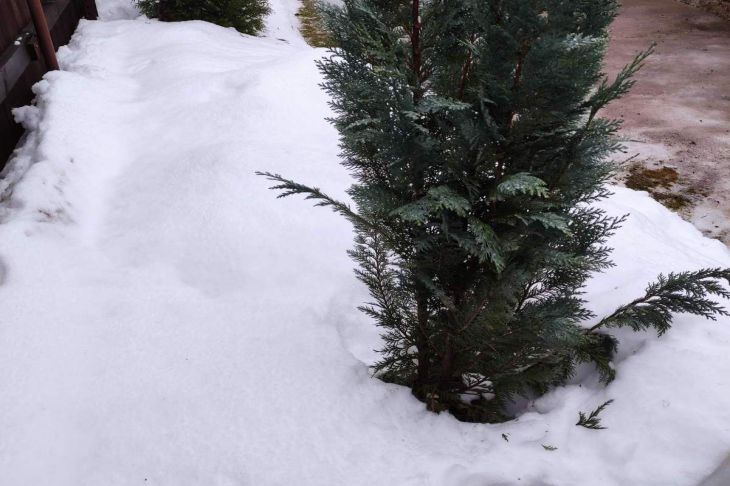Thuja is most often grown to decorate the area around the house. The plant is unpretentious, but it also requires care.
It should be watered, pruned, weeded and fertilized on time.
Proper care will make the plant strong and lush.
Top dressing
First, you need to identify which microelements the plant needs most. To do this, pay attention to its type.
With a lack of magnesium and potassium, the top begins to turn yellow.

If there is a lack of iron, some shoots will first turn yellow and then become increasingly lighter in color.
A lack of phosphorus is indicated by the needles at the ends of the branches turning brown and red.
To choose the right fertilizer, you should take into account the age of the plant, the condition of the soil and the timing of fertilizer application. You can use different fertilizers.
Thuja is fed with organic fertilizers: peat, manure and various types of compost. Green manures are also suitable, thanks to which the fertility of the soil increases.
You can feed the thuja with potassium fertilizers - salts and potassium chloride - to strengthen the dying tops of the branches.
To feed weakened seedlings or speed up plant development, nitrogen fertilizers are used.
Complex fertilizers
Most gardeners tend to use such fertilizers, as the plant can more easily tolerate balanced nutrition. Thanks to this, the thuja will grow well, and its crown will become lush.
Microfertilizers
They are added to saturate the soil with useful microelements.
It is best to use this type of fertilizing a year after planting the thuja. If you did not fertilize the plant in the spring, you should do it in the summer.
To do this, you need to spray the plant. Potassium and phosphorus fertilizers should be selected, such fertilizers are also suitable: superphosphate, complex preparations, potassium sulfate.








